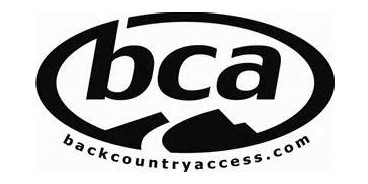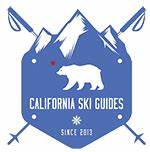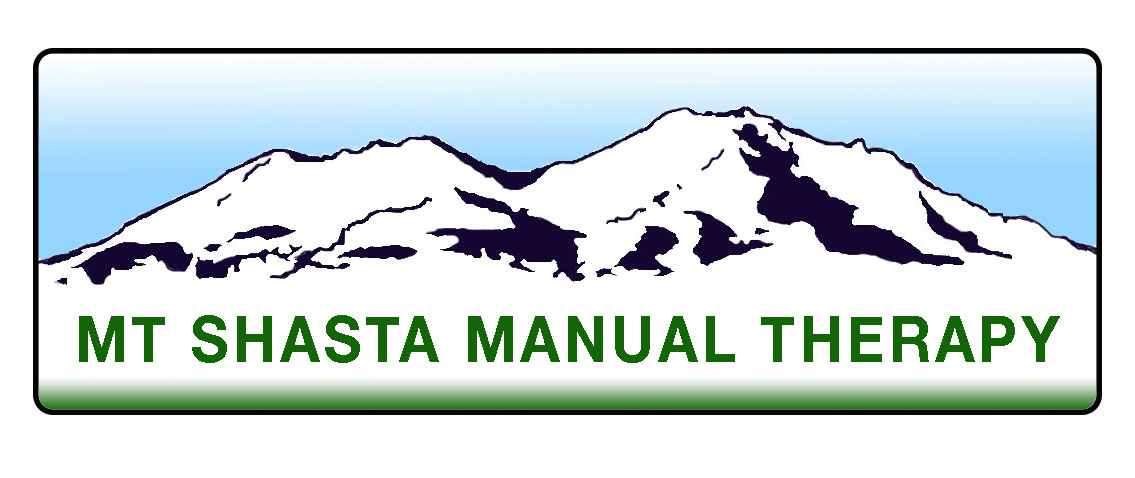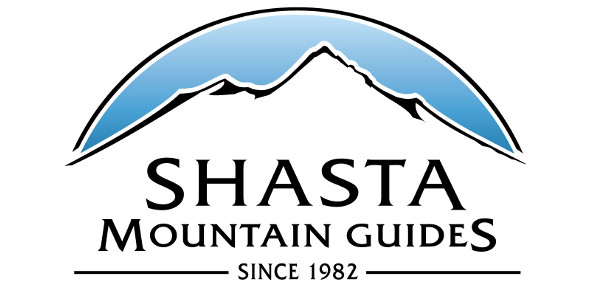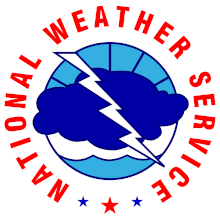You are here
Avalanche Advisory for 2016-01-24 06:29:48
- EXPIRED ON January 25, 2016 @ 6:29 amPublished on January 24, 2016 @ 6:29 am
- Issued by Nick Meyers - Shasta-Trinity National Forest
Bottom Line
Near and above treeline, overall MODERATE avalanche danger exists today with pockets of CONSIDERABLE danger for isolated W-NW-N-NE slopes steeper than 35 degrees.
Below treeline, LOW avalanche danger will prevail.
Human triggered avalanches are possible today near and above treeline for existing wind and storm slab avalanches. Evaluate the snowpack carefully and use conservative route finding.
Avalanche Problem 1: Wind Slab
-
Character ?

-
Aspect/Elevation ?

-
Likelihood ?CertainVery LikelyLikelyPossible
 Unlikely
Unlikely -
Size ?HistoricVery LargeLargeSmall

Wind slabs have formed with the recent blast of new snow and associated moderate to strong southerly winds. Some small, new wind slabs are possible later today with increasing west/northwest winds on SE-S-SW facing slopes. Existing wind slabs could be small to large in size and depth and could easily bury a person if triggered. The sensitivity of wind slabs to failure is uncertain due to lack of above treeline observations. Best to stay off of them for now. Wind loaded aspects are, but not limited to, NW-N-NE-E facing slopes. Some SE and W slopes have likely seen some cross-loading as well. Both typical wind loaded zones below ridge tops, and non-typical mid-slope starting zones on slopes 35 degrees and steeper should be most suspect near and above treeline. Watch for obvious signs of wind slab formation which typically take the form of wind pillows, hollow sounding-hard snow, visible blowing snow and snow surface patterns, and areas underneath cornice formations.
Avalanche Problem 2: Storm Slab
-
Character ?

-
Aspect/Elevation ?

-
Likelihood ?CertainVery LikelyLikelyPossible
 Unlikely
Unlikely -
Size ?HistoricVery LargeLargeSmall

Areas of partially open/protected trees near treeline will be the best place for storm slabs. Winds have limited storm slab formation above treeline. The new snow from recent days has fallen on top of a sun/melt-freeze crust that formed on Wednesday. This crust may act as a bed surface for the new snow on top. Lack of observations leaves uncertainty for storm slab stability. Evaluate the snowpack carefully.
Avalanche Problem 3: Cornice
-
Character ?

-
Aspect/Elevation ?

-
Likelihood ?CertainVery LikelyLikelyPossible
 Unlikely
Unlikely -
Size ?HistoricVery LargeLargeSmall

Cornice formations are abundant along ridge tops and should be given a wide berth while traveling in close proximity. They range from small wind lips of soft snow to large overhangs of hard snow. They can break off the terrain suddenly and pull back onto the ridge top catching people by surprise. Even small cornices have enough mass to be destructive and deadly. With the significant amount of snow already received and more on the way, cornices will only build in size. It is possible for cornice failure to trigger a wind slab avalanche on wind loaded slopes beneath it.
Forecast Discussion
A short respite over the area this morning, though snow showers are ongoing for upper elevations. A warm front is moving near the coast today and tonight. The storm will split, giving most of the action to the north and south. Upslope areas will see periods of precipitation this afternoon and this evening, up to .5 inches of water which could mean another couple inches of snow above 6,500 feet. Snow levels will rise from 4,100 feet today, 4,500 feet tonight and 5,000 feet Monday. Winds are very calm this morning and will remain so for lower elevations. Above treeline, increasing winds will reach 20-30 mph with some localized gusty winds in exposed areas out of the northwest. This system is one last wave of weather to finish off the weekend. An unsettled week will bring more chances of rain and snow and more on that later!
THIS SEASON PRECIPITATION: Since October 1st (the wet season), we have received 21.36 inches of water, normal is 20.57 inches, putting us at 103% of normal. For the month of January and year of 2016 we've received 11.87 inches of water, normal is 5.36 inches, putting us at 221% of normal .
Recent Observations
The forecast area has not seen any widespread instability this season, however we have had consistent avalanches occuring in isolated zones across the forecast area. Some frequent producers of avalanches are the open, NW aspect of Gray Butte, northerly aspects above Castle Lake, east/northeast aspects on Ash Creek Butte, Sun Bowl and Powder Bowl on Mt Shasta. We've also seen some longer running point release slides occur from the upper slopes of Mt Shasta. Spacial variability can be difficult, however all these slopes have a few things in common: wind loaded, near treeline, 35-38 degrees slope angle, sparse trees. While of course avalanches will not be limited to these areas, they are good "indicator" slide paths and great signs that avalanche danger is present. It's safe to say that as we get more snow and wind storms throughout the winter, avalanches will continue to occur.
Several winters of poor precipitation perhaps has our backcountry situational awareness on low. Beacon practice, safe travel techniques and being able to identify avalanche terrain is paramount. With a normal winter upon us, more frequent avalanche occurance should be expected and it is going to be very important to be on your game each and every day you head out into the backcountry. The snowpack has experienced many changes from cold to warm temperatures, rapid accumulation of snow at times, high wind, surface hoar formations, etc. The avalanche danger on Mt Shasta can be different than at Castle Lake or in the Eddy Range. Much of the terrain on Shasta is fairly simple terrain to navigate. Castle Lake, on the other hand, while short vertical relief, is complex terrain. In complex terrain, a blissful low angle ski can quickly become a convex rollover into a terrain trap. We cannot express to you enough that yes, it is important to read the avalanche advisory in the morning... BUT, it is even more important to be able to confidently travel and make decisions in the backcountry, to ski or not ski a slope based on real observations of the current terrain, weather and snowpack AND...be able to manage the trickiest variable of them all, the human factor. Powder fever is real, and can be life threatening.
We have not been able to produce unstable results with tests in the lower layers of the snowpack. Moderate failures however, have been produced in top 30-40 cm of the snowpack over the week. This raises a good bit of concern as "moderate" is right in the middle. Most avalanche accidents happen at moderate or considerable avalanche danger. That is when the skiing is the best, but that's also when there can be uncertainty. Is the snow moderately stable, or moderately un-stable? Moderate failures with the added 1-2 feet of new snow over the past 3 days could have the camel's back begging for mercy... and you could be the straw.
For today, a couple inches of settlement has occured in the snowpack over the past 24 hours and the avalanche danger has decreased some. We have few observations though a couple reports mentioned supportable, new snow. Any new wind or storm slabs will be few with the additional snow today. Remaining wind/storm slabs could certainly linger. The avalanche danger, while overall decreasing, could still host pockets of untable snow in isolated areas. The big picture is we've had a hefty amount of new snow over a fairly short period of time with southwesterly winds. Winds have calmed drastically and will remain calm below treeline. Above treeline we'll see increasing winds out of the west/northwest, 20-30 mph. A couple crust layers near the top layers of the snowpack could act as the bed surface for wind and storm slabs. Wind can deposit snow onto leeward slopes 10x faster than falling snow. This means potentially thick wind slabs with serious consequence should you hit the sweet spot. Storm slabs will lurk and near treeline slopes will be the best place for storm slabs. Above treeline is always tricky... sometimes the wind simply blows the snow away. Wind loaded, mid slope starting zones in gullies are common on Shasta as ridgelines typically get blasted. Leeward ridgelines should always be suspect, pretty standard, but mid-slope starting zones can be stumbled upon without warning as you ski down a seemingly nice looking bowl or gully. Fortunately, many mid-slope starting zones are not that steep, but mid-slope, wind loaded convexities (steep roll-overs) should be a "watch out" situation.
Remember, your skin track up the hill is just as important as your ski line down. Choose safe up tracks... don't just follow the skin track that is set if you're not comfortable with the route. Breaking trail is a lot easier than getting caught in an avalanche. Also, tracks on a slope does NOT mean the slope is safe.
Only one at a time on a given slope. Use safe zones and make sure they are safe! Use good communication between group members. Avoid large groups. Talk about your route plan for the day and be ready to adjust your plan as you notice unstable snow such as shooting cracks, whumphing, recent avalanches, and/or rapid accumulation of snow.
_______________________________________________________________________________________________________________________________________________
LOCAL AREA ROAD, NORDIC and SNOWMOBILE PARK STATUS:
The Sand Flat cross country ski trails are in great shape and ready for your cross country skis or snow shoes. These are backcountry trails marked with blue diamonds on trees. Trails are not groomed. Snow shoers, please blaze a parallel trail to cross country skiers staying out of the skin track. These trails can be accessed via the Everett Memorial Highway. Thank you, and enjoy!
The Mt Shasta Nordic Center is open! These beautiful, groomed trails can be accessed via the Ski Park Highway. http://www.mtshastanordic.org
The Pilgrim Creek & Deer Mountain Snowmobile Parks are open! Trails are being groomed currently. Head to our "Education" tab on our website and find the snowmobile section for trail information, grooming status and other sledder resources!
The Castle Lake road is plowed to the Vista Point. The Everett Memorial Highway is plowed to Bunny Flat.
The Five Red Flags of Avalanche Danger any time of year include: 1) Recent/current avalanche activity 2) Whumphing sounds or shooting cracks 3) Recent/current heavy snowfall 4) Strong winds transporting snow 5) Rapid warming or rain on snow.
Weather and Current Conditions
Weather Summary
Good Morning! In Mt Shasta City at 0500, we have a current temperature of 32 F, three degrees cooler than yesterday.
On Mt Shasta (South Side) in the last 24 hours...
Old Ski Bowl - 7,600 feet, the current temperature is 16 degrees F. Snow on the ground totals 124 inches with 2 inches new snow and about 2 inches of settlement also. Temperatures have ranged from 16 F to 28 F.
Grey Butte - 8,000 feet, the current temperature is 18 degrees F. Temperatures have ranged from 18 F to 27 F. Winds have been averaging 5-10 mph, west/northwest in direction with a max gust to 28 mph, west/southwest.
Mt Eddy Range (West side of Interstate-5)...
Castle Lake - 5,600 feet, the current temperature is 26 degrees F. Temperatures have ranged from 25 F to 34 F. Snow on the ground measures 68 inches with 2-4 inches new snow and 1-2 inches of settlement.
Mt Eddy - 6,500 feet, the current temperature is 22 degrees F. Temperatures have ranged from 18 F to 29 F. Snow on the ground measures 88 inches with 2-3 inches new snow and 1-2 inches settlement. Winds have averaged 1-2 mph, southerly in direction with a max gust of 11 mph, southwest.
Always check the weather before you attempt to climb Mt Shasta. Further, monitor the weather as you climb. Becoming caught on the mountain in any type of weather can compromise life and limb. Be prepared.
| 0600 temperature: | 24 |
| Max. temperature in the last 24 hours: | 32 |
| Average wind direction during the last 24 hours: | West/Northwest |
| Average wind speed during the last 24 hours: | 0-5 mi/hr |
| Maximum wind gust in the last 24 hours: | 28 (Gray Butte) mi/hr |
| New snowfall in the last 24 hours: | 1-2 inches |
| Total snow depth: | 101 inches |
Two Day Mountain Weather Forecast
Produced in partnership with the Medford NWS
| For 7000 ft to 9000 ft | |||
|---|---|---|---|
|
Sunday (4 a.m. to 10 p.m.) |
Sunday Night (10 p.m. to 4 a.m.) |
Monday (4 a.m. to 10 p.m.) |
|
| Weather | A slight chance of snow showers in the AM, then snow likely. Mostly cloudy. | Snow showers, diminishing, mostly cloudy | A 20% chance of snow showers, partly sunny |
| Temperature (°F) | 30 | 26 | 38 |
| Wind (mi/hr) | West becoming Southwest 5-10 mph | West, becoming south 5-10 mph | East 5-10 mph |
| Precipitation SWE / Snowfall (in) | / 1-2 | / 0-1 | / 0 |
| For 9000 ft to 11000 ft | |||
| Sunday | Sunday Night | Monday | |
| Weather | A chance of snow this morning then snow likely this afternoon | Snow showers, diminishing, mostly cloudy | A 20% chance of snow showers, partly sunny. |
| Temperature (°F) | 19 | 16 | 27 |
| Wind (mi/hr) | West/Northwest 25-35 mph, increasing | West/Northwest 1-2 | Northwest 25-35 mph |
| Precipitation SWE / Snowfall (in) | / 1-2 | / 0-1 | / 0 |



















